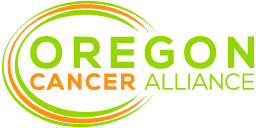Valerie Gansen was diagnosed with breast cancer seven years ago. No matter how much time passes, she will never forget the moment she got the call from her doctor.
“I remember exactly where I was,” she says. “I had three kids snuggling in my bed when the phone rang. Your world stops.”
Valerie was diagnosed with stage 0 breast cancer, also known as ductile carcinoma in situ, a non-invasive cancer that’s identifiable by abnormal cells found in the lining of the breast milk duct. With Stage 0 breast cancer, atypical cells have not spread outside of the ducts or lobules into the surrounding breast tissue. Having watched her sister battle breast cancer just five years before, Valerie chose to treat her cancer by having a double mastectomy.
“I was like, ‘Let’s get in there, get it done, be as aggressive as we can be.’ I just wanted to take as much breast tissue away as possible.”
Valerie is thankful she chose a double mastectomy because following surgery, the pathology report confirmed that her breast cancer was actually stage 2, not stage 0.
Breast reconstruction after cancer
As a physical therapist, Valerie lives an active lifestyle. She wanted to maintain her shape and still feel good in her clothes after surgery, so she chose to have breast reconstruction. She made that decision prior to her cancer surgery and scheduled a consultation with Dr. Kiya Movassaghi at Movassaghi Plastic Surgery.
“When breast cancer survivors come to see me, I appreciate that it’s a stressful time for them.” Dr. Movassaghi says. “They’ve just been diagnosed with something they didn’t sign up for and there’s a lot going on in their heads emotionally, physically, spiritually.”
When Valerie chose to pursue breast reconstruction, she asked a lot of questions—of her doctor but also fellow cancer survivors. She wanted to hear from them about why they either chose reconstruction or decided against it.
“It’s a very personal decision, and everyone has to make that decision based on what’s best for them, but I wanted to hear about other people’s experiences,” Valerie says. “Were they happy with the decision they made? And if not, why not? They also helped me know what questions to ask of my general surgeon and my plastic surgeon.”
Types of breast reconstruction
There are two main techniques for reconstructing the breast:
- Implant reconstruction: Inserting an implant that’s filled with saline (salt water) or silicone gel.
- Autologous or “flap” reconstruction: Using tissue transplanted from another part of the patient’s body (such as abdomen, thigh or back). Autologous reconstruction may also include an implant.
“Your plastic surgeon will go through the pros and cons with you and what it entails in each of these decisions. I make sure that the patient knows there is no Holy Grail option here. Every option has pros and cons, so let’s find the best option for you and we go from there,” says Dr. Movassaghi.
Why it’s important to consider breast reconstruction early
Not all patients choose to have breast reconstruction. However, if a patient knows they want reconstruction immediately, or at any point in the future, communicating that upfront allows the plastic surgeon to work with the patient’s general surgeon to preserve the skin of the breast during surgery to remove the cancer.
Dr. Movassaghi says, “The skin of the breast is just like the skin of the eyelids or the nose or the ears. It’s specialized skin, and it’s hard to restore it once it is removed. Once you lose it, the reconstruction becomes much more complicated and much more involved.”
Collaboration in patient care
In the Eugene-Springfield area, Dr. Movassagi and Dr. Garth Meldrum of Artistic Plastic Surgery are members of the Oregon Cancer Alliance breast care team. As members of the alliance, they are able to collaborate with other cancer care specialists in the community to achieve the best outcomes for patients. They are part of the patient’s care team, which includes surgeons, medical oncologists, radiation oncologists, radiologists, and pathologists. They all work together on the patient’s behalf. Members of the alliance convene as a group, also called a tumor board, to review specific cases, provide expertise and recommend treatment options.
“There’s no question that the outcomes I can achieve today, versus what I could achieve 5, 10 years ago is far more superior,” says Dr. Movassaghi. “By working with and alongside the general surgeon, we can save the patient an extra operation, but more importantly, we preserve the skin envelope of the breast which will only improve the results of their reconstruction.”
Is cancer-related breast reconstruction expensive?
To eliminate cost as a factor in a patient’s decision whether to have reconstruction, the federal Women’s Health and Cancer Rights Act was signed into law in 1998. It requires most group insurance plans that cover mastectomies to also cover breast reconstruction. Learn more here.
A positive outlook for the future
Valerie is pleased with the results of her breast reconstruction, and she’s proud of the treatment decisions she made. She is also grateful for the support she received from friends and family and especially from other cancer survivors.
“They helped me see that, yes, cancer sucks and a whole bunch of it is awful to go through, but they survived it and so could I. And I think if I can be of any help to other women going through this disease, that has been the upside of cancer.”
